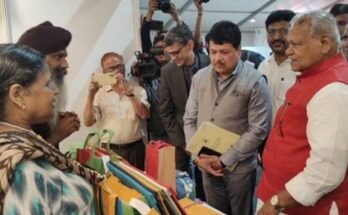One of the fundamental points that Indian policymakers and politicians haven’t understood since independence is that India needs to encourage manufacturing that employs low skilled and unskilled workers.
The public sector enterprises that were launched after independence concentrated on skilled manufacturing, and in the process did not create much employment. The Make In India programme launched by Prime Minister Narendra Modi, made the same mistake initially.
“After Narendra Modi became prime minister in 2014, he launched a “Make in India” campaign. But there was still a basic problem: His aides, at least initially, were not talking about building simple factories first, in industries like toys or textiles, of the kind that can employ many millions of people and jump-start an industrial middle class. They were talking about advanced factories in industries like solar-powered appliances and military weapons, which require the highly skilled workers not yet found in abundance among India’s vast population of rural underemployed. India was trying to skip over a step in the development process, not for the first time.”
As the press release put out by the Ministry of Textiles pointed out: “Looking at the seasonal nature of the industry, fixed term employment shall be introduced for the garment sector. A fixed term workman will be considered at par with permanent workman in terms of working hours, wages, allowances and other statutory dues.”
The fact that the move has come nearly two years after Modi became the prime minister tells us that the Indian establishment still remains enamored by the idea of skilled manufacturing.
In the early stages of their success, East Asian countries relied on relatively low-skilled manufacturing, typically textiles and clothing (China, Thailand, Indonesia, Malaysia etc), to motor economic growth. Later on they diversified into more sophisticated manufacturing but “jeans” offered the vehicle for prosperity early on. No country has escaped from underdevelopment using relatively skill-intensive activities as the launching pad for sustained growth as India seems to be attempting.
There is no reason that India should have been attempting anything else. But such was the marketing spin, first around public sector enterprises and then around information technology, that manufacturing that employs low-skilled workers was sort of looked down upon. But at the end of the day public sector enterprises and information technology needed skilled workers and given that they could create only so many jobs. And this was nowhere near the number of jobs that India needs.
Most estimates now suggest that India needs to create around one million jobs every month, for fresh individuals who are entering the workforce.
The textiles sector has the ability to create many low-skilled jobs and that gives it a tremendous fit with India’s natural competitive advantage i.e. low-skilled labour. In fact, as Arvind Subramanian and Rashmi Verma point out in a recent column in The Indian Express: “Every unit of investment in clothing generates 12 times as many jobs as that in autos and nearly 30 times that in steel.”
But the irony is that when comes to textiles, even Bangladesh is doing better than India. As Mihir S. Sharma writes in his book Restart-The Last Chance for the Indian Economy: “Before the expansion of trade, thanks to new international rules in the twenty-first century, India made $10 billion from textile exports, and Bangladesh $8 billion. Today India makes $12 billion-and Bangladesh $21 billion.”
India has very few factories that actually employ more than 500 people. Now compare that with China. The largest garment manufacturing factories in China have a workforce of 30,000. In fact, even Bangladesh has garment manufacturing units with 10,000 workers. In India, the numbers rarely go beyond 1,000 workers. In fact, in India, the garment manufacturers prefer to split their workforce into many units, instead of employing a lot of workers at one unit. This basically comes from the fear of not being able to retrench workers.
The government has now introduced the concept of the fixed term contract which allows textile companies to hire workers for a fixed period, instead of offering permanent employment. Up until now companies had been hiring contract workers, who in many cases are not paid as much as permanent workers even though the work being done is exactly the same. The fixed term contracts will also allow companies the flexibility to hire according to their demand. And they won’t have to keep workers on the rolls even when they don’t actually need them.
Note: News shared for public awareness with reference from the information provided at online news portals.



